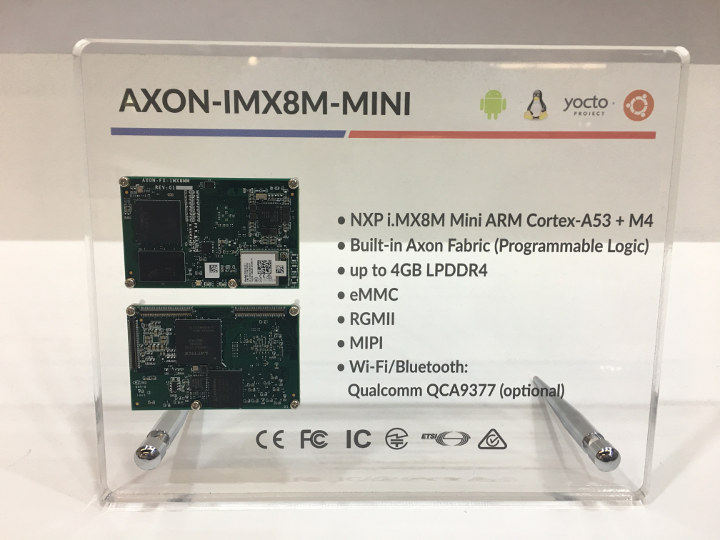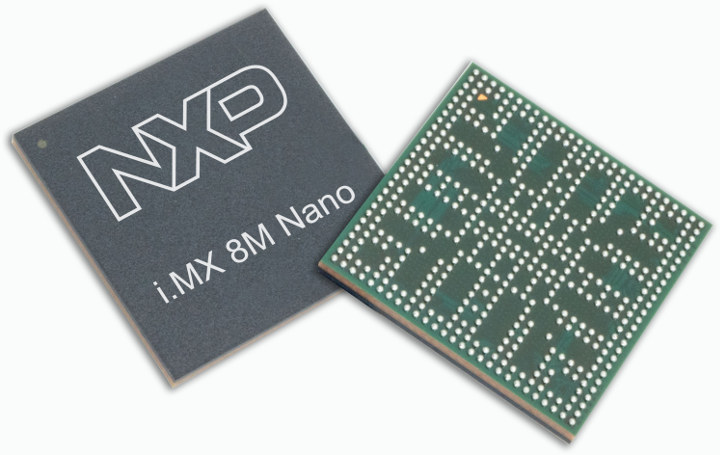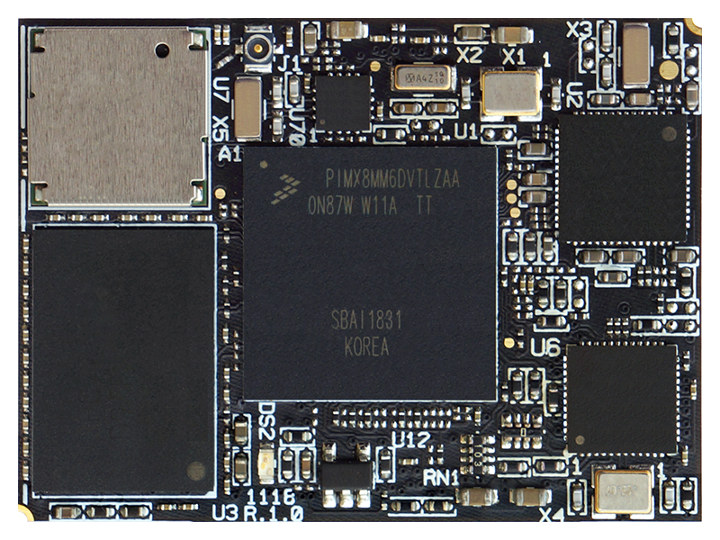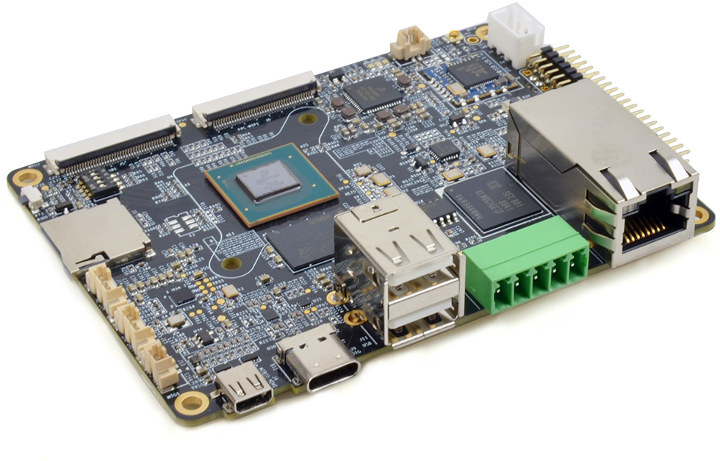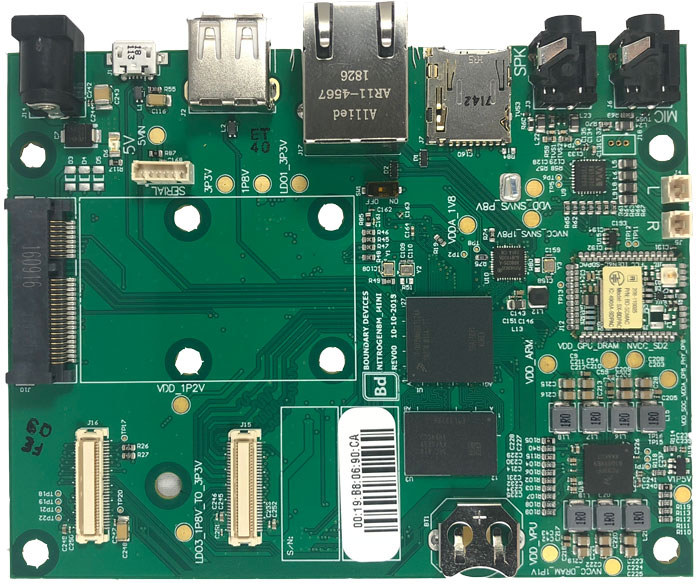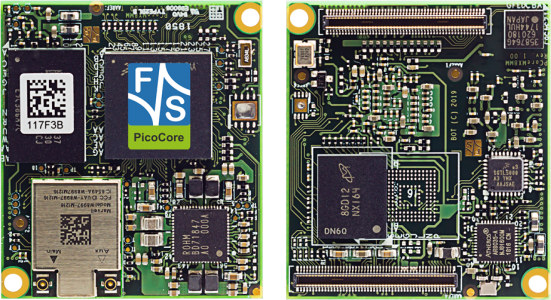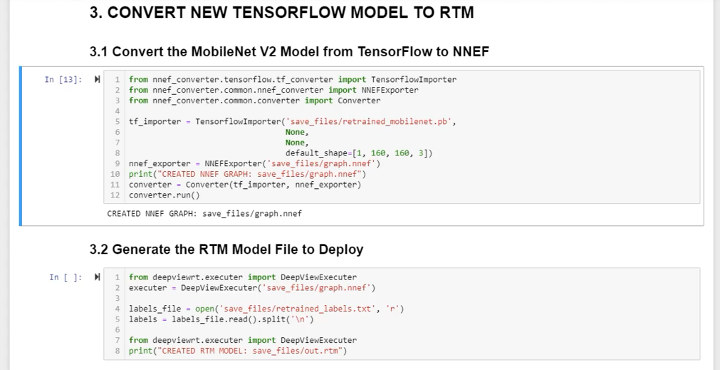Several low power neural network accelerators have been launched over the recent years in order to accelerator A.I. workloads such as object recognition, and speech processing. Recent announcements include USB devices such as Intel Neural Compute Stick 2 or Orange Pi AI Stick2801. I completely forgot about it, but Google also announced their own Edge TPU ML accelerator, development kit, and USB accelerator last summer. The good news is that Edge TPU powered Coral USB accelerator and Coral dev board and are going to launch in the next few days for respectively $74.99 and $149.99. Coral Development Board Coral dev board is comprised of a base board and SoM wit the following specifications: Edge TPU Module SoC – NXP i.MX 8M quad core Arm Cortex-A53 processor with Arm Cortex-M4F real-time core, GC7000 Lite 3D GPU ML accelerator – Google Edge TPU coprocessor delivering up to 4 TOPS System Memory – […]
TechNexion AXON and FLEX SoM Families Feature i.MX 8M Mini SoC, FPGA Fabric
Taiwan based Technexion has introduced several new products at Embedded World 2019 including two new SoM families: AXON and FLEX. AXON is a product family of small form factor (58 x 37 mm) modules designed for specialized embedded applications requiring extra I/O flexibility, while FLEX series is a low-cost family making use of the standard LPDDR4 SO-DIMM connector. Specifically, the company launched new AXON and FLEX modules powered by NXP i.MX 8M Mini processor with AXON-IMX8M-MINI featuring AXON Fabric programmable logic, a specialized IC that provides additional functions including nearly infinite pinmuxing, and FLEX-IMX8M-MINI that offers HD multimedia streaming and integrated 3D graphics for cost sensitive applications. AXON-IMX8M-MINI SoM AXON-IMX8M-MINI SoM specifications: SoC – NXP i.MX 8M Mini Solo, Dual or Quad Arm Cortex-A53+M4 processor FPGA – “Axon Fabric” making use of a Lattice MachXO3LF FPGA with 2100 LUTs (LookUp Tables) System Memory – Up to 4GB LPDDR4 RAM Storage […]
NXP i.MX 8M Nano is a Power-optimized Arm Cortex-A53/M7 Processor
NXP introduced their first 14nm i.MX processor at Embedded World 2018 last year with i.MX 8 Mini processor equipped with up to four Cortex A53 cores clocked at 2.0 GHz and one real-time Cortex-M4 cores clocked at 400+ MHz, and optional 1080p video output and decoding/encoding. The company has now added another 14nm member to their i.MX 8M family with NXP i.MX 8M Nano family also featuring four Cortex-A53 cores at up to 1.5 GHz, but replacing the Cortex-M4 by a more powerful Cortex-M7 core clocked at up to 600 MHz. The processor is also power-optimized for less than 2W total dynamic power (TDP) and sub-watt in many IoT edge applications. NXP i.MX 8M Nano key features and specifications: Application cores – One to four Arm Cortex-A53 cores up to 1.5 GHz per core; 32KB L1-I Cache/ 32 KB L1-D Cache; 512 KB L2 Cache Real-time core – Arm Cortex-M7 […]
CompuLab UCM-iMX8M-Mini is a Stamp Size i.MX 8M Mini SoM
We’ve recently written about several new hardware platforms based on the latest NXP i.MX 8M Mini processor family including Nitrogen8M_Mini SBC and F&S Elektronik PicoCore MX8MM SoM. Thanks to a new 14-nm process, the new family has the advantage of consuming less power, and the Cortex-A53 cores can run at a higher frequency. They should cost less as well thanks to cost-saving measures like the adoption of a 1080p video decoder instead of a 4K decoder found in the older NXP i.MX 8M family. CompuLab has now launched their own NXP i.MX 8M Mini SoM with UCM-iMX8M-Mini module that’s about the size of a largish stamp (38 x 28 mm) suitable for portable and space constrained applications such as professional handheld devices, wearable healthcare monitors and medical devices, autonomous drones with visual object recognition, or portable instrumentation equipment with advanced HMI. CompuLab UCM-iMX8M-Mini SoM specifications: SoC (one or the other) […]
Pico-ITX i.MX8M Board Enables Offline Voice Control with Snips
A few days ago, we covered Estone Technology’s MJ-100 RK3399 rugged tablet. I’ve just realized Estone Technology used to promote their embedded product under the Habey USA brand, which we covered a few times here, and the company has also announced another new product ahead of Embedded World 2019 with their EMB-2238 Pico-ITX i.MX8M board specifically designed for voice control applications. The company setup two voice control demos with the board: one with Amazon Alexa Voice Service (AVS) and another with Snips that works locally without any Internet connection. We actually came across Snips previously for an article comparing microphone arrays, but I never looked into Snips into details or saw an actual demo. Let’s have a quick look at EMB-2238 board specifications first: SoC – NXP i.MX 8MQuad with 4x Arm Cortex-A53 cores @ 1.5GHz, 1x Arm Cortex-M4 realtime-core @ 266MHz, Vivante GC7000L/GC7000LVX with support for OpenGL/ES 3.1, OpenGL […]
Nitrogen8M_Mini is the First NXP i.MX8 8M Mini SBC
Having just written about one of the first NXP i.MX 8M Mini systems-on-module, let’s stay with NXP’s latest 14-nm processor as Boundary Devices have been working on a variant of their Nitrogen8M SBC based on MXP i.MX 8M Mini processor and aptly called Nitrogen8M_Mini. The board is also known as the less human-friendly Nit8MQ_Mini_2r8e SBC, and comes with the following specifications: SoC – NXP i.MX 8M Mini with 4x Cortex A53 cores, 1x Cortex-M4F real-time core, Vivante GCNanoUltra 3D GPU, Vivante GC320 2D GPU System Memory – 2GB LPDDR4 (Optional 4GB version) Storage – 8GB eMMC flash, expandable up to 128GB, UHS SD card slot Display – 4-lane MIPI DSI interface up to 1080p Video Encode / Decode – 1080p H.264, VP8/1080p60 H.265, H.264, VP8, VP9 Audio – 3.5mm headphone jack, analog MIC jack, 2W audio amplifier, L&R speaker headers Camera Interface – 1x 4-lane MIPI-CSI interface Connectivity Gigabit Ethernet […]
F&S Elektronik PicoCore MX8MM System-on-Module Features NXP i.MX 8M Mini Processor
Embedded World 2019 will take place at the end of this month on February 26-28 in Nuremberg, Germany, and we can expect plenty of news related to embedded systems. It’s very likely NXP i.MX 8M Mini processor will officially be launched, and we’ll see several modules and boards announced with the lower cost 14-nm processor. F&S Elektronik Systeme has already been promoting their upcoming PicoCore MX8MM system-on-module based on NXP i.MX 8M in their newsletter ahead of Embedded World, where they’ll showcase their solutions at booth 621 in hall 2. PicoCore MX8MM specifications: SoC – NXP i.MX 8M Mini single, dual, quad core Arm Cortex-A53 @ 1.8 GHz processor, Cortex-M4 real-time core @ 400 MHz, 512KB L2-Cache, 2D/3D GPU System Memory – Up to 8GB LPDDR4 Storage – Up to 512MB SLC NAND flash or up to 32GB eMMC flash Video Decode – 1080p60 HEVC H.265, VP9, H.264, VP8 Connectivity 802.11ac […]
Adding Machine Learning based Image Processing to your Embedded Product
CNXSoft: This is a guest post by Greg Lytle, V.P. Engineering, Au-Zone Technologies. Au-Zone Technologies is part of the Toradex Partner Network. Object detection and classification on a low-power Arm SoC Machine learning techniques have proven to be very effective for a wide range of image processing and classification tasks. While many embedded IoT systems deployed to date have leveraged connected cloud-based resources for machine learning, there is a growing trend to implement this processing at the edge. Selecting the appropriate system components and tools to implement this image processing at the edge lowers the effort, time, and risk of these designs. This is illustrated with an example implementation that detects and classifies different pasta types on a moving conveyor belt. Example Use Case For this example, we will consider the problem of detecting and classifying different objects on a conveyor belt. We have selected commercial pasta as an example […]



